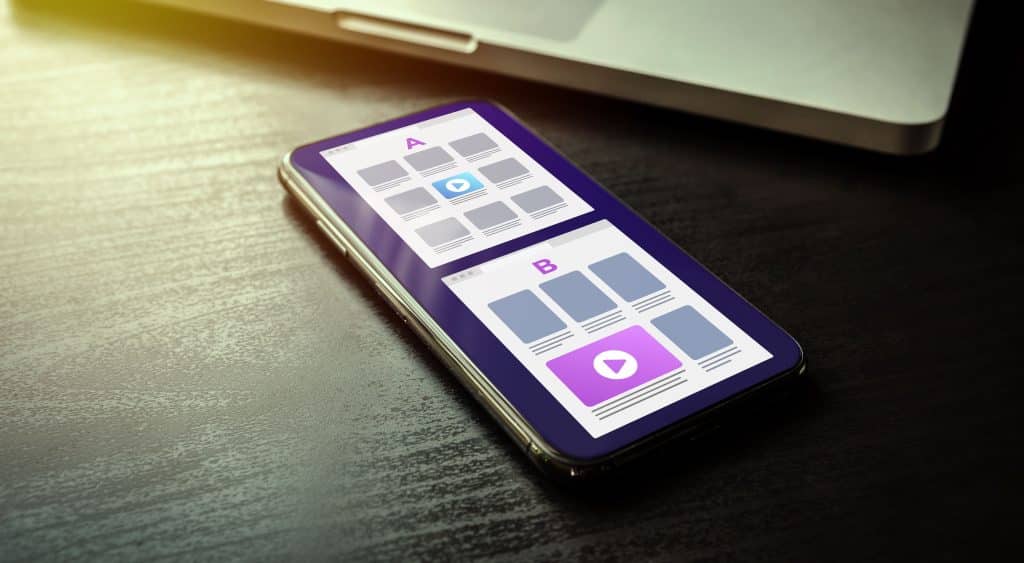The Definitive Guide to A/B Testing Your Email Marketing Campaigns

Email campaigns are an excellent way for brands to reach out to customers and build relationships with them. But how do you know if your emails are working? A/B testing is the answer!
In this guide, we will explore what A/B tests are and how to design effective tests that generate meaningful results. Read on to learn how you can use A/B testing to take your email marketing efforts up a notch!
What is A/B Testing for Email Marketing?
- A/B testing, also known as split testing, is a method of comparing two versions of an email campaign against each other and determining which performs better. During A/B tests, a single element is changed between the two versions; this could be the subject line, copywriting style, or even the color or font of the text.
- Once both campaigns are sent out to different segments of your audience, marketers can measure the performance metrics such as open rate and click-through rate in order to determine which version performed better and should be used in future communications. By running A/B tests regularly, brands can continuously optimize their email strategies for maximum results.
Looking for Help With Your Email Marketing Strategy?
Our team of experts is always available!
Benefits of A/B Testing for Email Marketing
Brands looking to get the most out of their email marketing efforts will experience many benefits when A/B testing email campaigns.
Here’s a few key advantages to using A/B tests:
- A/B testing allows marketers to experiment with different elements of their email campaigns to find the most engaging and converting content.
- With A/B tests, brands can easily compare two versions of an email against each other and determine which performs better.

- Marketers can identify what resonates best with their audience by testing multiple elements, such as subject line, copywriting style, font, or text color.
- Regularly running A/B tests helps marketers continuously optimize their emails for maximum results without sacrificing any version of the email campaign.
- Through A/B tests, marketers gain valuable insights about their customers, which helps them create more targeted campaigns that match the needs and preferences of their customers.
What to A/B Test in Your Email Campaigns?
We’ve mentioned that marketers should only change one element at a time when performing A/B testing for email campaigns.
Here are our recommendations for what to test so that you can get the best insights:
Subject Line
Testing different variations of subject lines can help determine which one resonates better with your target audience. You can examine which CTAs (Call-to-Actions) and emojis perform better than others and adapt accordingly.
Preview Text
Trying out different elements to include in your email preview could help boost conversions. These could be the recipient’s name, any emotional triggers, a summary of your email’s content, and more.
Copywriting Style
Test various styles and tones of copywriting to find which one is most effective in grabbing people’s attention and improving open rates.

Text Font and Color
Examine how changing the text font and color affects open and click-through rates. For example, combining a light background color with a dark text color may work better than the opposite, as it will be easier to read.
Visuals
Test different visuals such as images, buttons, or videos to see which versions are more successful in eliciting a response from your subscribers.
Landing pages
Assess how different landing pages affect user engagement after clicking a link within the email body.
Email Frequency
Measure whether sending emails more or less frequently can lead to higher opens and click-throughs rates over time.
Looking to Optimize Your Email Marketing Campaigns?
Our team of experts is always available!
Tips for Designing & Optimizing Your Email Tests
By properly setting, measuring and analyzing the results of your A/B tests, you can gain valuable insights into what works best for your customers and improve the effectiveness of future campaigns.
Here are some strategies to design and optimize your Email A/B Test results:
1. Start with a single variable
Focus on one variable at a time, such as the subject line or call-to-action button, to ensure accurate test results.
2. Set expectations
Determine what you want to achieve with each test and set realistic goals before starting it.
3. Run multiple tests
Design multiple versions of the same campaign to see which performs better, and make sure to rotate them throughout your campaigns.

4. Gather feedback
Request feedback from customers about their experiences with different versions of the campaign to get a better picture of what works best for them. This could be in the form of a follow-up email or by setting up a survey and including it in one of your next newsletters.
5. Use A/B testing software
Most email marketing tools, such as Hubspot or MailChimp, come equipped with A/B testing automation options. Utilize these to make the process easier and track your results more effectively.
6. Analyze results
Carefully analyze all test results to gain valuable insights that will help improve future campaigns.
What are Email A/B Testing Metrics? How to Analyze and Assess the Results of Your Email A/B Tests
Analyzing and assessing the results of your A/B tests is an important part of measuring the effectiveness of your email campaigns.
Here are some tips to keep in mind when analyzing and assessing the results of your tests:
- Gather data: Collect all necessary data, such as open rates, click-through rates, unsubscribe rates, etc. and analyze them carefully.
- Look for patterns: Analyze the results for any patterns or trends that emerge across different versions of a campaign.
- Track changes over time: Monitor changes in user engagement on each test version over time to identify any significant patterns.
- Keep testing: Be sure to conduct follow-up tests to confirm if a particular version is truly more effective than another one.
- Test various parameters: Try different combinations of parameters when conducting tests to assess their effectiveness in combination and individually.
- Identify insights: Utilize data from successful experiments to identify insights about what works best for your audience and how you can use those learnings in future campaigns.
Additional Factors to Consider When Conducting A/B Tests
We’ve covered the best strategies, tips, and variables to help you optimize your next email campaign.
However, there are several other factors you should keep in mind to ensure your email A/B test results are accurate and reliable:
Timezones
Your target audience may live in different time zones, so make sure to set up your tests across different times so that all types of customers can be reached.
Push Notifications
How quickly subscribers react to your emails can also depend on when they receive it, which will vary based on whether they have their push notifications on or off. This is why you should always consider waiting at least 2-3 hours before determining the A/B test’s winning version. Waiting longer than that is even preferable, but it could also depend on how many subscribers you’re targeting.

Privacy Settings
Certain email clients, such as Apple Mail and Gmail, often implement data privacy changes that could negatively affect your A/B test results. One crucial KPI that will usually be affected is email open rates. Other KPIs such as clicks, click rate, and clickthrough rate may also be skewed depending on certain factors. Marketers should be vigilant and follow industry news to stay ahead of the curve and avoid surprises.
Test Duration and Distribution
Many brands tend to overlook these settings when it comes to optimizing their A/B tests, but they could very likely become the determining factor for measuring your emails’ success.
Consider how long you want the A/B test to run and how many versions you would like to send out in each wave of testing to limit scope creep and maintain focus on the original objectives.
Sample Size
Remember to define a sample size that is statistically significant enough so that any conclusions made from the experiment can be trusted with confidence.
Email Clipping
If your email exceeds a certain size, it may get clipped in some email clients. Most email platforms will provide you with a warning if you exceed this limit before you hit “send” on your A/B test. Regardless, it’s recommended to manually check and ensure both versions of your email don’t go over the recommended size.
Email Marketing Services
When done correctly, email A/B testing can provide invaluable insights into the most effective techniques and strategies for engaging with your customers. Hiring an email marketing agency can be an excellent way for brands to maximize their ROI and ensure that their campaigns are reaching the right audience.

An experienced agency will have the expertise and advanced analytics tools to help identify any areas of improvement in your campaigns. They will also be able to provide valuable insights into customer engagement, allowing you to adjust your strategy accordingly to stay ahead of the competition.
An email marketing agency can also help automate processes such as scheduling emails and setting up A/B tests, saving you time and energy that would otherwise be spent on manual tasks.
By considering the abovementioned factors and using software tools to automate processes, you can optimize your campaigns and ensure you get the best results possible.
Looking for an Email Marketing Agency?
Our team of experts is always available to help!
FAQs (Frequently Asked Questions)
A/B testing is a type of test used to compare two variants of an email campaign to determine which one has the highest conversion rate. It involves sending two versions of an email, each with a different subject line, content layout, or call to action, and then measuring their respective performance on metrics such as open rate, click-through rate (CTR), and conversion rate.
Yes, A/B testing can be used on all types of email campaigns, from newsletters and promotional emails to transactional emails and automated messages. By testing different elements like subject lines and CTAs, you can quickly identify what works best for your audience and optimize your campaigns accordingly.
Running tests for your email campaigns is important because it allows you to measure their performance and identify any areas that need improvement or optimization. With A/B tests, you can quickly identify what works best for your audience and adjust your strategy accordingly to ensure maximum engagement and conversion rates.
The most common metrics used in email AB testing include open rate (the percentage of emails opened out of those sent), click-through rate (the percentage of people who have clicked through after receiving an email), bounce rate (the percentage of invalid emails sent out), and conversion rate (the number of people who completed the desired action after receiving the email).






